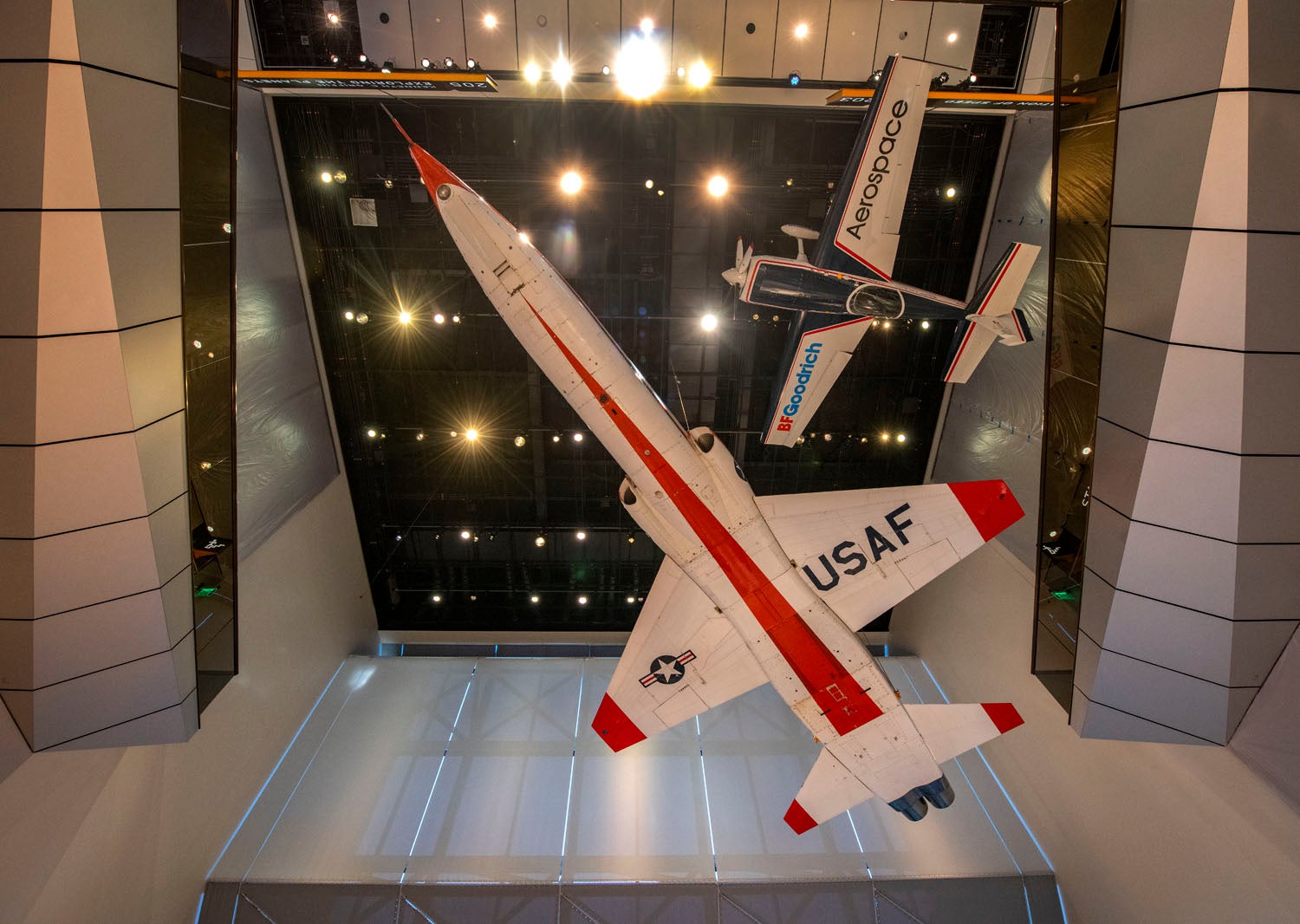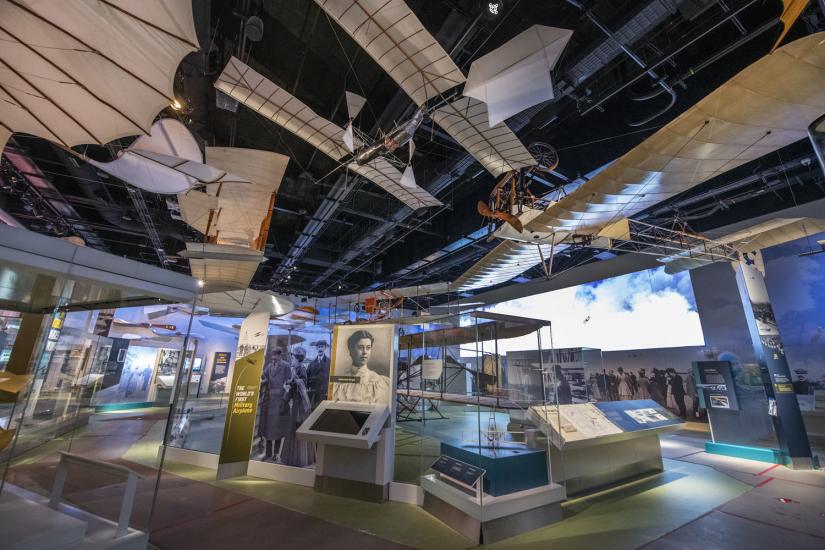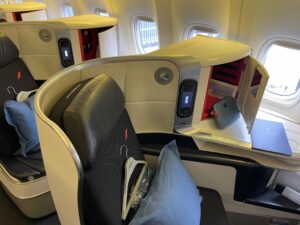For the first time in four years, guests can spend their weekend touring the Smithsonian’s National Air and Space Museum in Washington, D.C. The iconic museum on the National Mall officially reopened its doors Friday after closing down in 2018 as part of a $1 billion renovation project.
This marks a major milestone, though work is still underway. Only the museum’s west wing is back open, as construction on the east wing is not slated to wrap up until 2025.
Still, there’s plenty of reason to visit now. The Smithsonian unveiled eight entirely new exhibits Friday as part of this first phase of welcoming guests back, and there are improvements to other parts of the building as well. For instance, visitors will be able to enjoy new technological improvements at the building’s planetarium immediately.
The museum is ready, the exhibitions are complete, the artifacts are waiting to be seen.
It’s opening day at the National Air and Space Museum. We’re so excited to welcome you in and show you what we’ve been working on. pic.twitter.com/o89BwYxwwb
— National Air and Space Museum (@airandspace) October 14, 2022
How to visit
If you’re hoping to visit in the near future, though, you may want to plan ahead. Anticipating strong demand, the museum is controlling crowd sizes with free, timed-entry passes available hourly from 10 a.m. – 4 p.m. Passes are available online.
Checking the calendar, no passes were remaining for the first couple of weekends, but there’s plenty of availability during the week and from late October on.
On top of that, the museum is releasing same-day passes beginning at 8:30 a.m. each day.
“We are thrilled to finally unveil the first part of the newly renovated museum,” museum director Chris Browne said.
For more TPG news delivered each morning to your inbox, sign up for our daily newsletter.
What you’ll see
Museumgoers can now get the chance to see both new artifacts and fan favorites.
Exhibits include the plane Jacqueline Cochran flew as the first woman to break the sound barrier in 1953; the Sharp DR 90 Nemesis air racer, known for being the most successful aircraft in air racing history; the Apollo 11 command module Columbia, used to help land humans on the Moon for the first time; Sean Tucker’s custom-built aerobatic biplane; and the 1903 Wright Flyer airplane.
“The Apollo 11 command module Columbia will be housed in a custom-designed, climate-controlled case as the centerpiece of the ‘Destination Moon’ exhibition alongside Neil Armstrong’s Apollo 11 spacesuit,” the museum said in a press release Aug. 2.
“The 1903 Wright Flyer will be displayed in a dynamic new environment that better tells the story of the invention of flying and its implication on world history.”
“Star Wars” movie fans will be especially excited to see the full-size X-Wing Starfighter from “The Rise of Skywalker” on display for the first time.

“Many years ago when I first moved to the area and visited the museum for the first time, I remember being particularly drawn to the Apollo 11 command module, which I’m really glad they kept,” TPG editor Christine Gallipeau said. “Since I grew up in Florida by the Kennedy Space Center, anything space shuttle- or rocket-themed is super interesting to me.”
Related: Racing to the capital: What’s the fastest way to get from New York to Washington, DC?
AvGeeks, in particular, may be drawn to several of the displays unveiled later this year.
“America by Air” is an interactive exhibit examining the history of U.S. air transportation and how the experience of flying has changed over time. “Early Flight” uses artifacts — such as the Lilienthal Glider, 1909 Wright Military Flyer and the Bleriot XI — to explore what happened in aviation between the Wright brothers’ first flights in 1903 and the start of World War I in 1914.
If you are especially interested in the Wright brothers — who are known as the architects of the world’s first successful airplane — consider visiting a second exhibit on the duo. “The Wright Brothers and the Invention of the Aerial Age” features the return of the 1903 Wright Flyer, one of the museum’s most famous artifacts.

Space fans can enjoy the “Kenneth C. Griffin Exploring the Planets Gallery,” which is an exploratory exhibit of planets and moons, drawing on research from the museum’s Center for Earth and Planetary Studies.
“This is one of the most exciting times in the National Air and Space Museum’s history,” Browne said. “When we open the first reimagined galleries, we hope all visitors are inspired by artifacts on display for the first time, favorite icons of aerospace presented in new ways and diverse storytelling.”
Non-exhibit areas open
In addition to the eight new and renovated exhibitions, as mentioned, the museum has reopened the planetarium, complete with new screencast abilities, connecting the planetarium to others around the country. In addition to the museum store, Mars Cafe is also open.
Since 2018, the museum has been renovating all 23 exhibitions and presentation spaces. Crews have also been updating the exterior and making other repairs to the building. As renovations on the east end of the building continue, other parts of the museum — including additional galleries, the Imax theater and a new entrance set to be unveiled in 2024 — are expected to gradually reopen. The eastern side of the building will follow in 2025.
How to get to the museum
The National Air and Space Museum is located on the National Mall in the nation’s capital and is within walking distance of many other Smithsonian museums and D.C. monuments. While there is metered parking and parking lots available around the museum, finding a spot can often be a challenge and can be expensive. The museum recommends using Park Whiz to reserve a spot near the museum in advance.
The closest D.C. Metro station to the museum is L’Enfant Plaza, which is served by the system’s yellow, green, blue and silver lines.
Bottom line
While it will be a couple of years more before the entire National Air and Space Museum is open, this week’s reopening of the building’s west end is a major step for its fans, who can tour its exhibits for the first time since 2018.
Read more: What you need to know about Washington, DC’s cherry blossoms
Additional reporting by Sean Cudahy.
Featured photo courtesy of the National Air and Space Museum.




